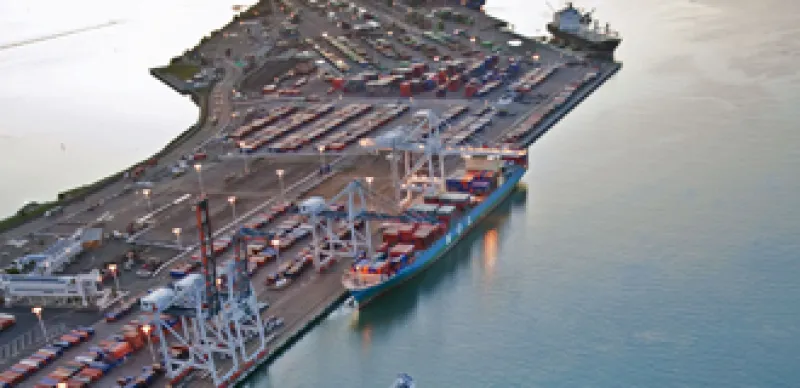Global shipping finance is more volatile than ever, but that hasn’t stopped a London hedge fund firm from wading into the market with an investment strategy meant to turn a profit during the dips and the swings.
The firm, M2M Management Group, launched its first shipping hedge fund in 2006. Today, Global Maritime Investments (GMI) has $400 million in assets under management, with annualized returns of 15 to 20 percent since its inception.
But this successful run has little to do with boom times in the shipping business. In fact, on July 9 the Baltic Dry Index (BDI), the world’s key indicator for dry bulk shipping freight rates, hit its lowest level in 13 months after plunging for 30 straight days. At 1,940 points, the index was down 50 percent from its peak in late May — a steeper drop than it endured during any 30-day period in the financial crisis. In addition to shipping rates, the price of ships fell 50 to 60 percent after the freight rate crash in 2008.
But according to Timothy Coffin, M2M’s 35-year-old investment manager, the hedge fund’s strategies pay off regardless of market direction. GMI takes advantage of the fact that the forward freight agreement (FFA) market, worth about $140 billion, is maturing and that participants are looking for new ways to manage risk. The market allows ship owners, charterers and traders to trade FFAs — option contracts on freight rates, listed on the London-based Baltic Exchange — as a way to hedge against the volatility of the ocean freight market. “The business thesis behind GMI was that you could have a fleet of ships that you chartered in and chartered back out, but you could manage the risk of those commitments much better because of the FFA,” says Coffin, formerly head of research at Capital Shipbrokers, which is now the tanker brokering arm of ICAP. “GMI captures the spread between the physical dry bulk market and the respective FFA market.” In doing so, GMI also offers investors new access to the global shipping market.
GMI leases ships and then charters them out, hedging their worth against a derivatives market like the FFA. In short, it is an arbitrage fund between the physical and derivatives markets, and that spread has tended to be relatively stable whether the markets are moving up or down. Case in point: The BDI was at its lowest level during the crisis — off 50 percent between October 2008 and January 2009. At that time, GMI was up 50 percent, according to M2M.
M2M’s new fund, Global Maritime Assets (GMA), operates in the same way except that it exploits a different arbitrage — one that directly takes advantage of the decline in global ship prices. With GMA, Coffin and his team are targeting the dislocation between freight rates and asset values (essentially, inexpensive ships). The fund, which has about $70 million in firm commitments and is set to launch in the coming months, is structured more like a private equity partnership than a hedge fund, but instead of buying into companies, the fund will purchase ships and lease them out.
Coffin cautions against seeing GMA as a “vulture fund” that is simply trying to buy inexpensive ships at the bottom of the market. “What we’re looking at is a spread that we can lock in at any moment,” allowing the fund to trade freight around the ship and provide a better yield compared with a pure capital appreciation strategy, he explains.
Coffin’s arbitrage strategy requires that freight rates and asset values not bottom out; if they do, the spread is lost. By mid-July freight rates were still tumbling, forcing Coffin to defend his strategy for GMA. “We happen to be in a three- to four-week correction point at the moment, where there isn’t necessarily an arbitrage,” he says. “But the market can’t fall forever.”
He has been proven right. The BDI began to make a relatively steady comeback by the second half of July. Karim Adi, a transfer and logistics research analyst at Credit Suisse in Zurich, concurs. Adds Coffin: “A lot of people are talking about this double-dip idea, but whether or not that happens, I wouldn’t expect it to be a long-term event. If it is, I should find something else to do.”






